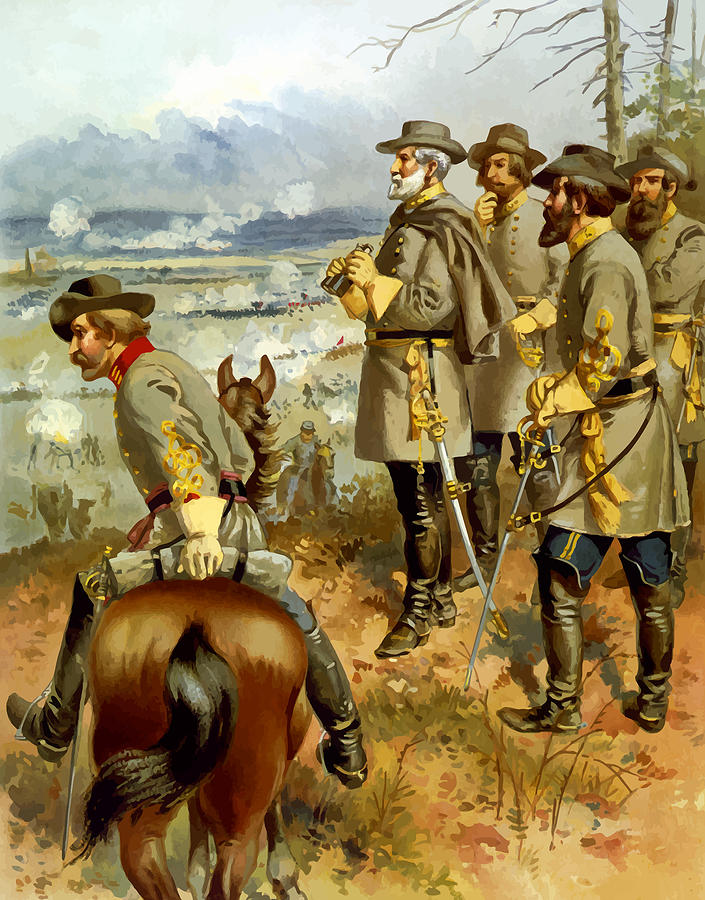
Month: December 2018
Having shot one of these brutes before. I can safely say that I would NOT mind owning one of them!
While I am no Fan of Glock, I have to admit that they do put out a funny & Great Commercial. That & seeing the Gunny again is always a good thing. I really miss that Old Boy. I just hope that God has taken good care of him!
___________________________
(Marcus Yam / Los Angeles Times)
When Californians voted in 2016 to allow the sale of recreational marijuana, advocates of the move envisioned thousands of pot shops and cannabis farms obtaining state licenses, making the drug easily available to all adults within a short drive.
Gov.-elect Gavin Newsom, who played a large role in the legalization of cannabis, will inherit the numerous challenges when he takes office in January as legislators hope to send him a raft of bills next year to provide banking for the pot industry, ease the tax burden on retailers and crack down on sales to minors.
“The cannabis industry is being choked by California’s penchant for over-regulation,” said Dale Gieringer, director of California NORML, a pro-legalization group. “It’s impossible to solve all of the problems without a drastic rewrite of the law, which is not in the cards for the foreseeable future.”
After voters legalized marijuana two years ago under Proposition 64, state officials estimated in there would be as many as 6,000 cannabis shops licensed in the first few years. But the state Bureau of Cannabis Control has issued just 547 temporary and annual licenses to marijuana retail stores and dispensaries. Some 1,790 stores and dispensaries were paying taxes on medicinal pot sales before licenses were required starting Jan. 1.
Assemblyman Jim Wood (D-Healdsburg), who has crafted cannabis regulations, said the licensing system had not yet lived up to its promise.
“I am optimistic about the coming year, where our focus will be primarily on getting more businesses licensed and increasing enforcement efforts on the illegal market,” Ajax said.

There are many guns designed and marketed to the hunting folks that are really good guns and are recognized as such.
However, on the other side there are also a number of highly overrated guns that do not live up to their reputations.
They used to be great but are now just trucking along on their past reputation or living off their fans nostalgia.
Here are the guns for hunting that we see as not measuring up to the media hype due to poor performances.
- Weatherby Magnum Cartridge

Weatherby has some fine high velocity magnum cartridges such as: .270, .300, .378 and .460 magnum.
The most popular among hunters were .257 Weatherby, .300 and .30-378 Weatherby. - These cartridges provide a flat shooting cartridge that can still hit hard at long range. A necessary cartridge for hunting elk, mule deer, sheep and mountain goats.
However, it is also true that the gap in performance between the Weatherby magnums and their closest competitors is often overstated. - For instances, the .300 Weatherby Magnum shoots a 180gr bullet about 300 feet per second faster than the .300 Winchester Magnum.
- Yes, it shoots a little bit flatter and hit a little bit harder, but no elk will be able to tell the difference and I’ll bet that there isn’t much you can do with the .300 Weatherby that you can’t do with the .300 Win Mag.
- Post-2007 Marlin 1895

This Marlin is a big bore gun commonly used by hunters going after large tough game in North America. This gun is also known as the “guide gun”, used to defend against an angry bear at close range is ideal.
That reputation helped Marlin sell guns in the market. However, since 2007 Marlin was acquired by Remington. The quality assurance declined, complaints of wood on the stock and feeding malfunctions reports begin pouring in.
If you’re looking to still get a lever action 1895 Marlin, get it before the 2007 production. - Holland & Holland Double Rifle

Double barreled firearms first became widespread during the days of the muzzleloader.
The ability to fire two shots quickly without the lengthy reloading process required by a muzzleloader is a great advantage for hunters.
Breech loading double rifles, chambered in big bore cartridges like the .450/400 and .577 Black Powder and Nitro Express rounds were popular in the late 1800s and early 1900s among hunters in India and Africa hunting large species of dangerous game like tiger, buffalo, and elephant.
These rifles were a big deal to have and proved their worth during these close range encounters.
Holland & Holland rifles were (and still are) regarded as the the cream of the crop among double rifles. They were advertised as fully hand made by master gun makers that put in 850 man-hours of work that were put into each rifle.
One of the custom feature on their double rifles was the custom built size specifications this allowed the rifle to fit the shooter and points perfectly. Thus, this rifle became known as the most reliable and best “feeling” rifles available.
First downside to this rifle is its small magazine capacity.
A competent shooter with a bolt action can get off two shots no problem plus modern bolt-action rifle can hold up to 5 big bore cartridges in the magazine.
Second downside is that being a great equalizer at close range, its not that great at 50 plus yards whereas a different rifle can do a better job.
Third downside is the weight of this beast comes in at 13 pound. The heaviness was great for reducing the recoil, but when you have to lug it for 10-20 miles through the woods, its not likely for most hunters.
Last downside is the price unless you’re Bill Gates. Holland double rifle goes for $100,000 and every year the price keeps going up.
There you have it, a few overpriced hunting guns. What other overpriced hunting guns have you come across?









Oh my! NSFW

One evening, Grayson H. and five of his friends decided they wanted to go catch a 7 p.m. movie at the Central Mall in Fort Smith, Arkansas. The mall was overly crowded, so they parked about 100 yards from the door and walked to the ticket counter.
Before the movie started, the group decided to go back to their vehicles, since they had a little time to waste before the movie began.

Mike Seeklander is owner of Shooting-Performance LLC, a full-service training company, and the co-host of “The Best Defense,” the Outdoor Channel’s leading self-defense and firearms instruction show.
One of the friends in the group, Tabitha, was going through a difficult divorce and the group of friends was looking forward to a fun evening to cheer her up. However, while the group was standing in the parking lot waiting for the movie to start, Grayson noticed that Tabitha’s ex-husband was driving around.
Before Grayson knew it, Tabitha’s ex had jumped out of his vehicle and was walking toward the group. The ex, identified as 34-year-old Fadi Qandil pulled a gun from his waistband and fired multiple shots at Tabitha missing her.
Grayson saved Tabitha by pushing her out of the way, but he was hit by the gunfire and fell to the ground. Immediately, Grayson pulled out his own gun, a Smith & Wesson, and returned fire striking and killing Qandil. Grayson made a full recovery from his wounds.
Obviously, Grayson saved lives that day and while he carried a Smith & Wesson, which is a great gun, it’s definitely not the most expensive gun on the market.
I hear from a few folks that think guns are too expensive these days, but you don’t have to spend a fortune to get a quality gun.
Here are some solid handguns on the market that are under $500.
SIG Sauer P250

Normally, SIG Sauer firearms aren’t put into the “inexpensive” category. Their finely tuned construction and impeccable accuracy are more akin to a Swiss watch than they are a cheap handgun.
Believe it or not, SIG Sauer manufactures a handgun for less than $500, which is an incredible value for a high-quality gun and one of my personal favorite guns to carry.
The P250 is a double-action-only pistol with a modular system that gives the shooter the option to change to different calibers, barrel lengths, and grip sizes.
The P250 can be purchased in 9mm, .357 SIG, .40 S&W, .45 ACP and .380 ACP.
The price will depend on the specific options you choose but this is a great value for a gun under $500.
Walther Creed
This is a relatively new pistol from Walther, designed to meet the demands of folks wanting a decent entry-level gun without breaking the bank.
The Creed was designed with comfortable ergonomics and a high-quality trigger that is typically featured on much more expensive guns.
In addition, in the 9mm you get 16+1 rounds, which is a great number for a compact 9mm.
The Creed starts around $400, and I love to carry this gun.
Smith & Wesson SD9VE

Smith & Wesson is known for it’s long tradition of making quality firearms including both revolvers and semi-automatics.
Smith & Wesson is known for its long tradition of making quality firearms including both revolvers and semi-automatics.
The SD9VE is a polymer-framed striker-fired 9mm pistol with a magazine capacity of 16 rounds.
The thing is, this firearm has been around since the 1990s and legend has it that the company spent millions of dollars researching the shape of the human hand to create the best grip and shape of the pistol.
The upshot? For around $400 you get a solid handgun.
Canik TP9
Canik is a Turkish company that broke into the U.S. market with its poly-frame striker that is extremely accurate and reliable.
One of the biggest advantages to this firearm is that you can easily purchase aftermarket accessories to upgrade or replace any parts.
Plus, with Canik’s TP9, you get a 9mm with an 18+1 capacity for around $350. I own this gun and it’s never given me any issues.
Kahr ST9

Like all Kahr handguns, the ST9 is an excellent American-made pistol that is reliable, durable, and accurate.
The Kahr Arms ST9 is an ideal choice for concealed carry and those looking for maximum stopping power and ultra concealment with all the features of a tactical pistol. The Kahr Arms ST9 offers enhanced grip texturing, with an integral accessory rail and an enhanced magwell for speed and efficiency. Like all Kahr handguns, it’s an excellent American-made pistol that is reliable, durable, and accurate. This version has a stainless steel slide with front and rear serration for ease of operation and 3-dot combat sights to get you on target quickly. If you are looking for the ultimate in concealed carry, the Kahr Arms ST9 may be the EDC pistol you have been searching for.
The sleek-looking, two-tone, ST9 carries an MSRP of $456.
Do you have a favorite handgun for under $500 that should have made this list? Make your best case in the comment section.
Jason Hanson is a former CIA Officer and New York Times bestselling author of Spy Secrets That Can Save Your Life. To get a free copy of his book, visit www.SpyEscape.com.





